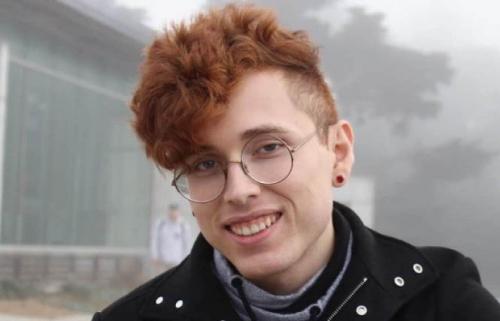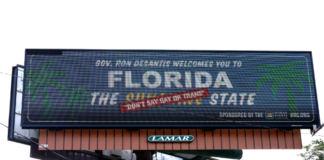With the growth in acceptance of LGBTQ people came a curious byproduct: increased attention and marketing. While many more ordinary folks were warming up to the LGBTQ community and growing more understanding of their plight, cigarette manufacturers were as well, but more for its potential as a lucrative market than as a community in need of support. It’s a trend that plays out in other marginalized communities, as well.
“Aggressive marketing strategies, including price discounts, are often targeted toward vulnerable populations. In particular, lesbian, gay, bisexual, transgender, and queer … communities were identified as a ‘new market with growth potential’ starting in the 1990s,” according to a 2021 paper titled “Tobacco Control as an LGBTQ+ Issue: Knowledge, Attitudes, and Recommendations from LGBTQ+ Community Leaders.”
Even more recently, We Breathe — an effort led by the California LGBTQ Health and Human Services Network to eliminate smoking among queer Californians — has issued its policy platform titled “Tobacco Control: An Intersectional Approach.”
That precedes a webinar, hosted by We Breathe, from 11:30 a.m. to 1 p.m., Thursday, November 17. The webinar, led by CHLHSN’s LGBTQ Program Director Isaias Guzman, is open to the public. To attend, register here. The webinar is only the first of a planned series, officials said.
Despite widespread efforts by California to convince its citizens to abandon tobacco, those efforts, according to the platform, are hampered by a lack of appropriate outreach to the LGBTQ community, which — like many marginalized communities — sees a disproportionate percentage of its members using tobacco products.
That use, according to the platform, often has its roots in the high levels of stress many queer people, particularly youth and people of color, face every day. In what many health officials said was good news for California youth and others, voters last week overwhelmingly passed Proposition 31, which prohibits the sale of most flavored tobacco products in the state. Proponents of the 2020 law, which never went into effect because tobacco companies challenged it, leading to last week’s referendum, say that many flavored tobacco products are designed to appeal to young people.
But the issue of LGBTQ students using tobacco continues to be a major concern of We Breathe.
“Due to bullying, isolation, lack of access to supportive services, lack of connectedness, etc., 40% of LGB high school students actively use at least one type of tobacco product, a rate that is higher than among heterosexual students,” the report stated. “Double the rate of LGB high school students smoke cigarettes, compared to heterosexual students, while 31% of transgender youth smoke cigarettes. LGB youth are twice as likely to be daily smokers and more likely to use multiple tobacco products than are heterosexual youth.
“If we do not address the lack of support within the education system and address discrimination experienced by LGBTQ+ youth, then tobacco-related health disparities will follow LGBTQ+ youth throughout their lifetime,” the report added.
How tobacco has made inroads into the community is something that is better understood now than it was back in the early 1990s when tobacco companies first set their sights on the LGBTQ market. That said, there’s plenty that still isn’t understood, particularly how tobacco use plays out in the queer community’s numerous subgroups, particularly as so little data about the community is collected by the government agencies and organizations attempting to reach out.
“When we dive into what is known about LGBTQ+ tobacco use it rapidly becomes apparent that we lack data about tobacco use within subgroups of LGBTQ+ populations,” the platform states. “Many studies will look only at lesbian, gay, and bisexual (LGB) people, excluding the entire transgender and nonbinary communities. There are some studies that indicate that substance use, including tobacco, is higher among LGB cisgender women when compared to their LGB cisgender male peers. As these types of preliminary studies show, it is imperative that any research funded to study LGBTQ+ populations should include measures to compare data and results between subgroups of LGBTQ+ people.”
Given that lack of knowledge, it’s imperative that the effort to contain tobacco use come from the community, said Guzman, 28, who identifies as a queer Latinx man.
“We brought the community into the development of the platform and that process and we’re one of the only ones that did that,” he said. “We also understand the necessity of working from an intersectional approach, working across communities.”
Guzman said the community needs “to address inequities in housing, employment and homelessness, and discrimination” in order to remove the factors that encourage LGBTQ people to turn to tobacco. With such a diverse community — queer folks around found in every demographic, of course — “We need to be thinking more broadly,” he said.
LGBTQ Agenda is an online column that appears weekly. Got a tip on queer news? Contact Eric Burkett at e.burkett@ebar.com
Due to the Thanksgiving holiday, the LGBTQ Agenda column will return Tuesday, December 6.
Help keep the Bay Area Reporter going in these tough times. To support local, independent, LGBTQ journalism, consider becoming a BAR member.








